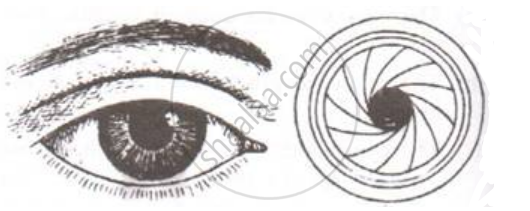Advertisements
Advertisements
Question
Choose the Odd One Out:
Options
Sneezing
coughing
blinking
typing
Solution
typing
APPEARS IN
RELATED QUESTIONS
Differentiate between: Rods and cones
What kind of lens is present in the human eye?
What changes the shape of lens in the eye?
The eyes of a person are focused (i) on a nearby object, and (ii) on a distant object, turn by turn. In which case:
the focal length of eye-lens will be the maximum?
What happens to the size of pupil of our eye (i) in dim light (ii) in bright light?
How much is our field of view:
with both eyes open?
Out of animals of prey and predators, which have their eyes:
on the opposite sides of their head?
Among animals, the predators (like lions) have their eyes facing forward at the front of their heads, whereas the animals of prey (like rabbit) usually have eyes at the sides of their head. Why is this so?
The region in the eyes where the rods and cones are located is the
The figure below compares a part of our eye with a part of a photographic camera.

Explain the mode of working and the functions of the parts of the eye mentioned above.
Differentiate between:
Vitreous humour and Aqueous humour.
Draw a diagram of the human eye as seen in a vertical section and label the parts which suit the following descriptions relating to the:
(i) photosensitive layer of the eye.
(ii) structure which is responsible for holding the eye lens in its position.
(iii) structure which maintains the shape of the eyeball and the area of no vision.
(iv) anterior chamber seen in front of the eye lens.
(v) outermost transparent layer seen in front of the eyeball.
Give Technical Term:
The cells of the retina that are sensitive to colour.
Give Technical Term:
Name the part of the retina on which an object is focused for the clearest vision.
The larynx has fold of tissue which vibrate with the passage of air to produce sound.
The pigmented circular area seen in front of the eye:
Name the part of the eye which gives colour to the eyes.
State the functions of the following:
Iris
Name the following:
Place of no vision in the retina of the eye.
The layer in the eye where sensory cells (rods and cones) are located ______.
